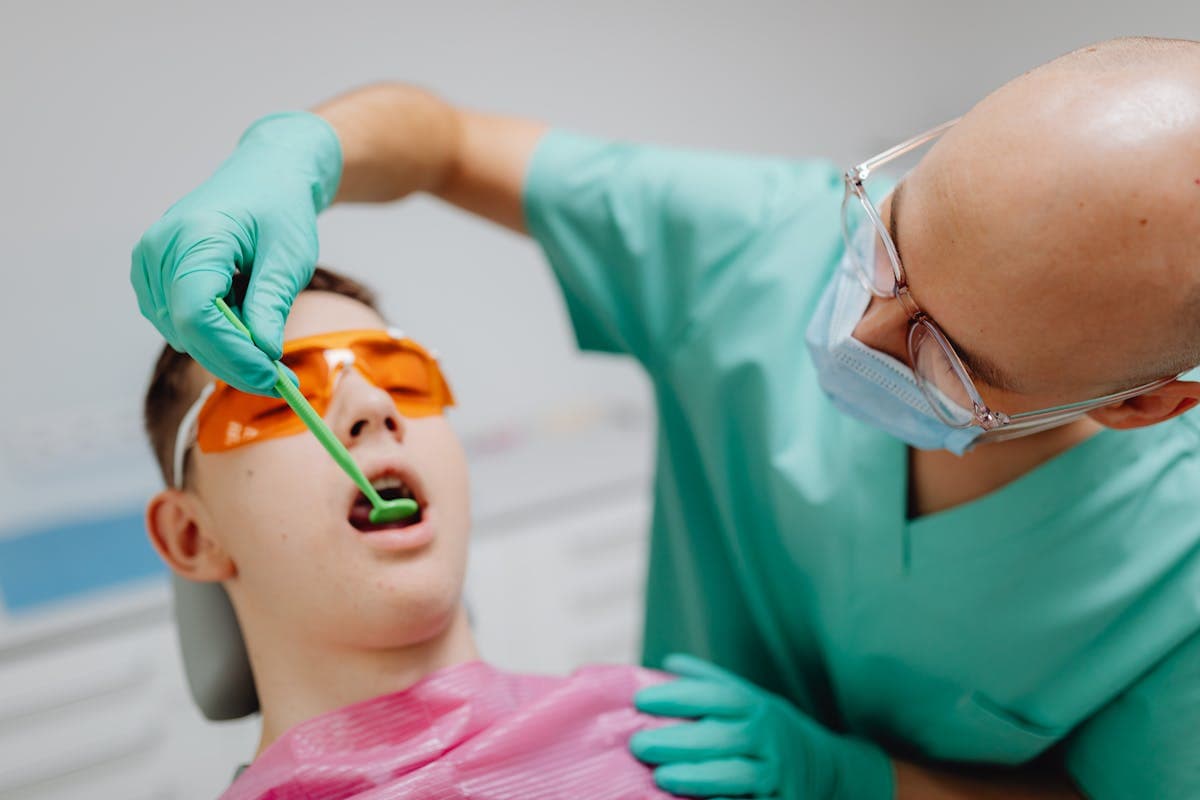As an intriguing development in oral healthcare, the Laser-Assisted New Attachment Procedure, or LANAP, has been garnering attention for its role in treating periodontal disease. This procedure leverages the precision of Nd:YAG laser technology to stimulate natural tissue regeneration and bone growth, all while minimizing patient discomfort and recovery time. In contrast to traditional gum surgery, LANAP eliminates the need for sutures and reduces the risk of infection. How does this remarkable process work and what are the implications for the future of periodontal care? Let’s explore these questions further.
Understanding LANAP Procedure
The Laser-Assisted New Attachment Procedure (LANAP) stands as a pioneering approach within the field of periodontal therapy. Patient preparation begins with a thorough oral evaluation to ascertain the suitability for this minimally invasive procedure. Once deemed appropriate, the dentist provides information about the procedure steps, guaranteeing the patient understands the process. LANAP involves a specialized free-running pulsed laser to selectively remove diseased or infected periodontal tissues, sparing and preserving healthy gum, root, and bone structures. The procedure is typically completed in two sessions, each focusing on one half of the mouth. Post-procedure, patients are provided with specific oral care instructions to promote ideal healing and recovery. LANAP offers a revolutionary alternative to traditional periodontal surgery.
The Science Behind LANAP
The underlying science of LANAP is a critical component in comprehending its effectiveness and benefits. This discussion will explore the technology driving LANAP, its advantages, and associated risks, providing a thorough understanding of the procedure. A subsequent analysis will also examine the recovery process post-LANAP, shedding light on the patient experience after the procedure.
Understanding LANAP Procedure
While many may associate periodontal therapy with invasive surgery, Laser Assisted New Attachment Procedure (LANAP) offers a less intrusive alternative. This LANAP procedure overview shows a technique that employs a specific wavelength of light to target and eliminate diseased tissue without affecting healthy areas.
Patient eligibility for LANAP is broad. It is suitable for most individuals suffering from moderate to severe periodontitis, except for those with certain medical conditions or habits such as uncontrolled diabetes and smoking. The procedure generally involves two sessions, each lasting about two hours, with minimal discomfort and little to no postoperative pain. Understanding the LANAP procedure can help patients make informed decisions about their periodontal treatment options.
LANAP: Technology and Benefits
Building on our understanding of the LANAP procedure, it is worthwhile to examine the technology and benefits that underpin this innovative approach to periodontal therapy. The LANAP technology utilizes a free-running pulsed neodymium:yttrium-aluminum-garnet (Nd:YAG) laser. It selectively eradicates diseased tissue, preserving healthy gums. The precision of this technology minimizes patient discomfort, reduces recovery time and promotes natural tissue regeneration. The benefits of LANAP are numerous. It is a minimally invasive procedure, often requiring no sutures or cutting. It also offers superior long-term results, with most patients experiencing less gum recession and greater bone regeneration than traditional methods. LANAP technology is, consequently, a significant advancement in periodontal therapy, offering patients a healthier, more comfortable treatment option.
Risks and Recovery Post-LANAP
Despite the numerous benefits of LANAP technology, like any medical procedure, it is not without its risks, albeit minimal. Post-LANAP care is essential to minimize these risks and guarantee a smooth recovery timeline.
Here are a few key points to remember:
Patients may experience mild discomfort or sensitivity in the treated area. This is usually temporary and can be managed with over-the-counter pain relievers.
Careful oral hygiene practices are critical post-LANAP to prevent infection and promote healing. This includes regular brushing, flossing, and rinsing with an antimicrobial mouthwash.
Regular follow-ups with the dental professional are necessary to monitor the healing process and address any potential complications early.
Diligent post-LANAP care guarantees successful recovery and long-term periodontal health.
Benefits of LANAP Treatment
A myriad of advantages accompany the utilization of Laser Assisted New Attachment Procedure (LANAP) treatment. Primarily, LANAP provides significant long-term benefits, as it promotes bone regeneration, enhancing the longevity of a patient’s oral health. Additionally, this minimally invasive procedure reduces post-operative discomfort and speeds up the recovery process. Moreover, LANAP eliminates the need for sutures and decreases the risk of infection, contributing to a smoother healing process.
Patient experiences with LANAP treatment have been overwhelmingly positive, with many reporting reduced pain and swelling compared to traditional surgery. With its less intrusive nature, patients also note a decrease in dental anxiety. Consequently, the adoption of LANAP offers a compelling blend of medical and psychological benefits that greatly enhance the patient’s overall dental experience.
Comparing LANAP and Traditional Surgery
Having underscored the benefits of LANAP treatment, it’s instructive to juxtapose this modern approach with traditional periodontal surgery. LANAP offers several advantages that reflect its superiority.
To begin with, its minimally invasive nature entails less post-operative pain and faster recovery.
In addition, it’s more precise, selectively removing diseased tissue while conserving healthy ones, promoting better healing outcomes.
Finally, LANAP’s use of laser technology eliminates the need for sutures, reducing the risk of infection.
In contrast, traditional surgery bears several drawbacks. It tends to be more invasive, leading to longer recovery time. Also, its non-selective nature might result in unnecessary removal of healthy tissue. Further, the use of sutures raises the potential for post-operative complications.

Potential Side Effects of LANAP
As we continue our exploration into LANAP, it is essential to address possible adverse outcomes or complications that may arise post-procedure. We will first clarify the process involved in a LANAP procedure before identifying and discussing the most common side effects. Finally, we will provide insights into how best to manage and mitigate any complications that may occur after the LANAP treatment.
Understanding LANAP Procedure
The Laser Assisted New Attachment Procedure, commonly known as LANAP, is a revolutionary treatment for periodontal disease that uses laser technology to eradicate bacteria and promote healing. This LANAP procedure overview highlights the process in which a special kind of laser selectively eliminates diseased tissue, leaving the healthy tissue unharmed.
The procedure includes:
Initial patient evaluation: To determine patient eligibility criteria, the oral health condition is thoroughly assessed.
Performing LANAP: The treatment, under local anesthesia, involves removing bacteria and diseased tissue.
Post-procedural care: The patient is guided through a regimen to promote healing and prevent re-infection.
LANAP’s minimally invasive nature, coupled with its precision, makes it a preferred choice for treating periodontal disease, ensuring a faster healing process with less discomfort.
Common LANAP Side Effects
While LANAP is a highly effective and minimally invasive procedure for treating periodontal disease, it is not without potential side effects. Patients may experience minor discomfort, swelling, or bruising post-procedure, although these side effects typically subside within a few days. It’s also common to have altered sensation in the treated area, which is a temporary occurrence. Some patients might have slight bleeding, especially in the first 24 hours after the procedure. Rarely, patients may encounter infection or prolonged pain. It’s essential for patients to communicate openly with their healthcare provider about any concerns or side effects experienced. Understanding these potential side effects can help patients feel more prepared and at ease about undergoing LANAP therapy.
Managing Post-LANAP Complications
Managing potential complications after a LANAP procedure requires a well-structured approach and clear understanding of what to expect. It is crucial to adhere to the post procedure care guidelines supplied by your dental professional to mitigate any discomfort and prevent further complications.
Here are key factors in managing post-LANAP complications:
Early intervention: Patients should report any unusual symptoms promptly for immediate attention.
Pain management: Over-the-counter pain relievers or prescribed medications can aid in managing discomfort after the procedure.
Proper oral hygiene: Regular brushing and flossing can prevent infection and promote healing.
Success Stories and Testimonials
Diving into the sea of success stories and testimonials, one finds a wealth of positive experiences associated with Lanap. The treatment has achieved remarkable results regarding patient experiences and treatment outcomes. Patients report significant improvements in their oral health, often highlighting reduced discomfort and successful gum regeneration. This laser-assisted procedure has been lauded for its minimally invasive nature and rapid healing, greatly enhancing patient comfort. Numerous testimonials underscore the tangible benefits of Lanap, with patients celebrating enhanced quality of life following the treatment. These narratives help to solidify the value and effectiveness of Lanap, demonstrating how it has transformed lives by restoring oral health and confidence in numerous patients across the globe.
Costs and Insurance Coverage
Having highlighted the effectiveness of the Lanap treatment through numerous success stories, it is equally important to examine its financial aspects. A thorough cost evaluation can provide an understanding of the affordability of this procedure.
Insurance Options: Insurance companies often cover a portion of the treatment cost. It is essential to communicate with your provider and understand the extent of your coverage.
Out-of-pocket Cost: Depending on insurance, there may be an out-of-pocket cost. This can vary based on the complexity of the procedure.
Flexible Payment Plans: Some dental offices offer flexible payment plans, easing the financial burden.
Understanding the cost and insurance coverage can aid in making an informed decision about pursuing Lanap treatment.
Finding a LANAP Certified Dentist
How does one go about finding a LANAP certified dentist? The process entails thorough research and due diligence. Start by finding dentists in your local area that offer this specialized procedure. You can use online dental directories or professional dental association websites for this.
Once you identify potential practitioners, check their credentials. Make sure they’re LANAP certified and have undergone the requisite training. Next, look at patient reviews. These are invaluable for providing insights into the dentist’s skills, demeanor, and overall service.
Frequently Asked Questions
Can LANAP Treatment Be Used for Children?
Regarding children’s periodontal health, the suitability of specific treatments, such as LANAP, primarily depends on individual cases, adhering to the LANAP eligibility criteria, and the professional assessment of a qualified dental practitioner.
What Types of Dental Issues Can LANAP Address?
Laser Assisted New Attachment Procedure (LANAP) can effectively address various dental issues, primarily focusing on improving gum disease and overall periodontal health by eliminating bacteria and stimulating tissue regeneration.
Is LANAP Treatment Painful?
The comfort of a treatment largely depends on individual experiences. However, with effective pain management strategies, discomfort can be minimized. It’s crucial to consult with your healthcare provider to understand the comfort level associated with this procedure.
How Long Does the LANAP Procedure Take?
The procedure duration for this treatment typically spans two 2-hour sessions, with a recovery timeline of 24 hours. It’s a relatively swift process that minimizes patient discomfort and expedites the healing process.
Are There Any Special Care Instructions Post-Lanap Treatment?
Post-treatment guidelines include gentle oral hygiene practices, avoiding certain foods, and taking prescribed medications as directed. Recovery tips emphasize rest, hydration, and timely follow-ups with your dental professional to guarantee ideal healing.


